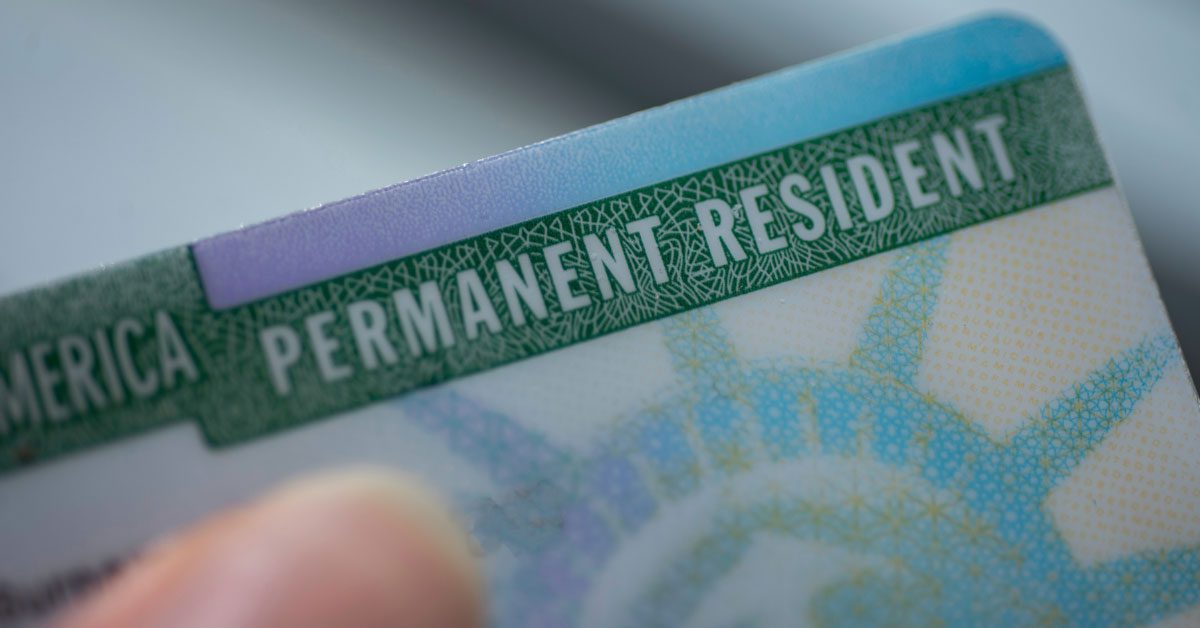Professional strategies for maximizing your chances of EB-5 visa approval
EB-5 Visa Explained: Exactly How to Get a Visa Via Financial Investment
The EB-5 Visa program provides a distinct chance for foreign financiers looking for united state long-term residency with a structured investment method. With particular eligibility requirements and investment thresholds, the procedure requires careful factor to consider and calculated planning. Understanding the nuances of the application procedure, consisting of the distinctions in between regional centers and straight investments, is important for possible applicants. As this path unfolds, potential financiers should navigate numerous benefits and difficulties that accompany it. What are the important elements that can influence the success of an EB-5 application?
Overview of EB-5 Visa
The EB-5 Visa program, designed to boost the U.S. economic climate with international investment, supplies a pathway to irreversible residency for eligible capitalists and their families. Developed by the Immigration Act of 1990, the program intends to attract international capital to produce work and boost economic development in the United States. Financiers that contribute a minimum total up to an approved job can obtain this visa, thereby permitting them to purchase different sectors, consisting of actual estate, infrastructure, and various other companies.
The EB-5 program is especially appealing because of its dual benefits: a chance for financial returns on investments and the potential for united state citizenship. By buying targeted employment areas (TEAs), which are defined as rural areas or locations with high joblessness, investors may get approved for a decreased investment threshold. The program needs the development of at the very least ten full time work for united state workers as a direct result of the investment. Successful applicants get a conditional visa for 2 years, after which they can request permanent residency, provided they meet all program demands. This pathway has gathered interest from financiers around the world, making it an important component of united state migration plan.
Qualification Requirements
To get the EB-5 Visa, financiers should meet particular eligibility requirements that ensure their investment adds to task development and financial growth in the USA - EB-5. Most importantly, candidates must spend a minimum of $1 million in a brand-new business, or $500,000 if the financial investment is made in a targeted work area (TEA), which is commonly identified by high unemployment or rural places
Furthermore, the enterprise has to preserve or develop at least 10 full-time work for certifying united state workers within 2 years of the capitalist's admission to the USA. Investors are additionally needed to demonstrate that their investment funds were acquired through lawful methods, offering evidence such as tax obligation returns and financial institution declarations.
An additional critical standard is that the investment should be in a for-profit company entity that was developed after November 29, 1990, or one that has been restructured or increased to meet the EB-5 needs. Candidates need to demonstrate their intent to actively get involved in the company, ensuring that their involvement adds to its success. Satisfying these eligibility requirements is necessary for capitalists looking for to obtain irreversible residency with the EB-5 program.
Investment Options
When thinking about the EB-5 visa, capitalists should evaluate their choices in between straight investment opportunities and regional center programs. Each choice brings details job development needs that are vital for fulfilling the visa criteria. Understanding these investment opportunities is necessary for making an educated choice that straightens with both monetary goals and immigration purposes.
Direct Investment Opportunities
Direct investment possibilities under the EB-5 Visa program give foreign investors with a pathway to acquire U.S. long-term residency while contributing to the American economic situation. Unlike local center financial investments, straight investments call for investors to proactively manage their company ventures within the united state, enabling prospective higher control and impact over their financial investment outcomes.
To get the EB-5 Visa via direct investment, foreign nationals should spend a minimum of $1 million in a brand-new business or $500,000 in a targeted employment area, which is specified as a rural location or a region with high unemployment. The investment should lead to the development of a minimum of ten permanent jobs for qualifying united state workers within 2 years.
Straight investment alternatives can vary widely, including industries such as genuine estate growth, technology, production, and hospitality startups. Capitalists should perform extensive due diligence to assess the viability of their picked company version and guarantee compliance with EB-5 regulations. Engaging with financial and legal specialists experienced in EB-5 issues is recommended to browse the intricacies of direct financial investment opportunities and maximize the capacity for an effective application.
Regional Facility Programs
Leveraging the EB-5 Visa program, local facility programs offer a streamlined financial investment avenue for international nationals seeking united state irreversible residency. These programs are marked by the U.S. Citizenship and Migration Solutions (USCIS) and focus on merging investments to fund numerous economic development projects, which may include realty, facilities, and organization ventures.
Investors generally contribute a minimum of $900,000 in targeted employment areas or $1.8 million in other areas. EB-5. Among the major benefits of local facility programs is that they allow financiers to satisfy the EB-5 investment demands with indirect job development, rather than route task creation required in direct financial investment possibilities
Regional centers handle the financial investment in behalf of the financiers, supplying a more easy approach than direct financial investment. This administration consists of supervising project advancement, economic coverage, and compliance with USCIS regulations. Additionally, local facilities typically have developed performance history, enhancing the confidence of potential financiers.
Ultimately, local center programs present an engaging option for those aiming to navigate the intricacies of the EB-5 Visa process while adding to united state economic development and task production.
Work Development Requirements
To get an EB-5 Visa, investors have to verify that their capital expense leads to the creation of at the very least ten permanent jobs for U.S. workers within 2 years. This job creation demand is a vital part of the EB-5 program, designed to stimulate the united state economy and promote economic growth.
Financiers can choose in between 2 primary financial investment options: straight financial investments and financial investments through Regional Centers. With direct financial investments, the investor needs to proactively manage the company and guarantee work creation, while likewise showing that the jobs created are for U.S. residents or authorized permanent citizens. Alternatively, Regional Center financial investments enable capitalists to pool their resources right into an assigned job, often leading to indirect work creation, which can be counted towards fulfilling the job demand.
To efficiently satisfy the job production requirements, it is necessary for capitalists to function closely with knowledgeable specialists that can direct them via the complexities of the EB-5 program. Appropriate preparation and adherence to laws are essential to validate conformity and safeguard a course to permanent residency. Failure to satisfy these job creation demands can endanger the investor's EB-5 application and their migration condition.
The Application Process
The application process for the EB-5 visa involves a collection of important steps and specific eligibility demands that applicants must meet. Comprehending these requirements is important for a successful application. This section will certainly detail the essential credentials and give a detailed guide to guiding through the process.

Eligibility Requirements Overview
Understanding the eligibility requirements for the EB-5 visa is crucial for possible capitalists aiming to obtain permanent residency in the United States. To qualify, a private have to show a minimal financial investment of $1 million in a brand-new business business, or $500,000 if the financial investment is made in a Targeted Work Location (TEA), which is defined as a rural location or one with high unemployment.
Moreover, the investor has to reveal that the financial investment will certainly preserve or create at the very least 10 full time work for united state workers within 2 years of the investment. The enterprise needs to likewise be a for-profit entity and needs to be freshly developed or substantially redesigned if it is an existing service.
The applicant should verify that the mutual fund are obtained via authorized methods, consisting of personal savings, gifts, or fundings supported by correct documents. Additionally, the investor has to proactively take part in the service, guaranteeing their interaction in the management of the venture. Satisfying these eligibility standards is necessary for an effective EB-5 application and inevitably protecting a copyright via this investment avenue.
Step-by-Step Treatment
Once eligibility needs are met, possible financiers can begin the application procedure for the EB-5 visa. The primary step includes finishing Type I-526, the Immigrant Application by Alien Capitalist. This form needs to be accompanied by sustaining paperwork that shows the investor's qualifying investment and the creation of at the very least ten permanent jobs for U.S. workers.
Upon authorization of Form I-526 by the United States Citizenship and Immigration Services (USCIS), investors can request the EB-5 visa through either consular handling or modification of status, relying on their current residency. For those outside the U.S., this suggests submitting a visa at an U.S. consular office. Alternatively, if currently in the U.S., applicants need to submit Type I-485, Application to Register Permanent Home or Change Standing.
After approval, investors and their eligible relative get conditional irreversible residency for 2 years. Within 90 days before the expiry of this conditional condition, capitalists must file Type I-829, Petition by Business Owner to Get Rid Of Conditions, to get long-term residency. Effective conclusion of this step wraps up the EB-5 financial investment procedure, giving the financier a Visa.
Regional Centers vs. Direct Investments
Maneuvering the EB-5 visa program includes an important choice between straight investments and local facilities, each offering distinctive paths visit this web-site to acquiring long-term residency in the USA - EB-5 Visa by Investment. Regional facilities are marked by the United States Citizenship and Immigration Solutions (USCIS) to advertise economic development with job development. When spending through a local facility, capitalists typically contribute to a pooled fund, which is managed by the facility. This choice often enables a more passive investment method, as the facility manages the job and job production needs
In comparison, straight investments need investors to actively handle their very own business endeavors in the USA. This method demands a more hands-on participation, as the investor needs to create and sustain a minimum of 10 full time work directly related to their company. While straight investments may provide greater control over the financial investment outcome, they also require greater obligations and risks.
Inevitably, the selection in between direct financial investments and regional centers depends upon individual risk tolerance, preferred involvement degree, and financial investment goals. Recognizing these distinctions is crucial for capitalists seeking to navigate the complexities of the EB-5 visa program successfully.
Advantages of the EB-5 Visa
The EB-5 visa program provides countless benefits for international financiers seeking long-term residency in the United States. One of the most considerable benefits is the opportunity for investors and their immediate relative, consisting of partners and kids under 21, to obtain a permit, giving them the right to work and live in the U.S. indefinitely.
Furthermore, the EB-5 program does not require an enroller, enabling financiers greater autonomy in their immigration trip. This program also supplies a pathway to citizenship after five years of permanent residency, promoting long-lasting security for households. In addition, spending through marked Regional Centers can be much less difficult, as these entities typically handle the task and task production requirements in behalf of the capitalist.
Additionally, the EB-5 visa can bring about significant monetary returns, as financial investments are normally directed toward business that can yield earnings. Finally, by adding to economic development and work development in the united state, EB-5 capitalists play a vital duty in boosting local communities. In general, the EB-5 visa works as an engaging alternative for those looking to secure a future in the United States while making a positive influence.
Typical Difficulties and Considerations
While the EB-5 visa program presents eye-catching benefits for international capitalists, it likewise includes its share of difficulties and considerations that prospective candidates need to meticulously review. One considerable difficulty is the financial commitment entailed, as the minimal financial investment amount is considerable, usually set at $1 million or $500,000 in targeted employment locations. Capitalists must ensure that they have sufficient capital and a clear understanding of the linked threats.

Possible financiers should conduct extensive due persistance on the investment projects to stay clear of illegal plans. The success of an EB-5 application rests on the creation of a minimum of 10 full time tasks for united state employees, requiring careful planning and surveillance of the service's performance (EB-5). Eventually, steering these obstacles calls for a critical technique and usually the assistance of knowledgeable professionals in immigration and financial investment regulation
Often Asked Questions
How much time Does the EB-5 Visa Process Usually Take?

Can Family Members Apply With the Key EB-5 Candidate?
Yes, relative can apply together with the primary applicant. EB-5 Visa by Investment. Qualified dependents generally include partners and single children under 21, allowing them to acquire environment-friendly cards contingent upon the main applicant's successful visa authorization
What Occurs if My Investment Fails?
If your investment stops working, it may jeopardize your migration status and the possibility for acquiring an environment-friendly card. It's important to carry out detailed due persistance and take into consideration threat mitigation methods prior to waging any type of financial investment.
Exist Age Restrictions for EB-5 Investors?
There are no certain age limitations for EB-5 investors; however, the individual should be at least 18 years old to legally become part of investment contracts. Minors may qualify via adult investment and sponsorship.
Can I Traveling Outside the U.S. During the Application Process?
Taking a trip outside the united state during the application process might impact your condition. It is advisable to speak with an immigration attorney to understand prospective risks and assurance compliance with all needs while your application is pending.
Regional focuses handle the financial investment on behalf of the investors, supplying a much more easy technique than direct financial investment. To certify for an EB-5 Visa, capitalists must validate that their capital investment results in the production of at least 10 full time jobs for United state workers within 2 years. Financiers can choose in between two primary financial investment choices: straight investments and investments via Regional Centers. The investor has to show that the investment will certainly protect or create at the very least 10 full-time jobs for United state workers within two years of the financial investment. Ultimately, the selection between straight investments and local facilities pivots on specific threat tolerance, desired involvement level, and investment objectives.